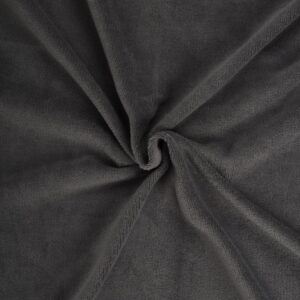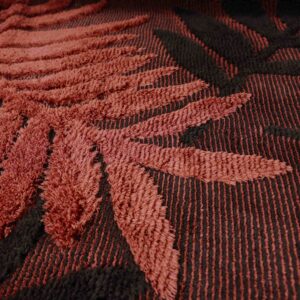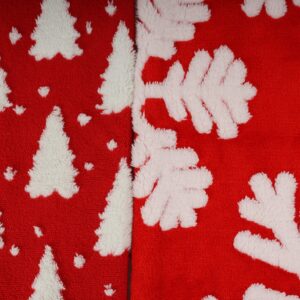Fleece fabrics have long been known for their warm, soft, and comfortable feel. Shearling fleece fabric has become extremely popular over the recent past years in outerwear, blankets, and lifestyle products. People do not know how Sherpa fleece differs from regular fleece fabric both in raw material and general performance.
It gives a detailed account of the disparities between Sherpa fleece and regular fleece-wearing material composition, production processes, warmth, texture, and applications.
It answers related questions in terms of durability, environmental impact, cleaning method, and cost comparison. By the time you come to its end, you will be able to tell which type of fleece fabric suits your needs best.

What is Sherpa Fleece?
Definition: Sherpa fleece is a type of imitation lambskin fabric made primarily from polyester through processes such as brushing, spinning, and shearing.
Features:
It has a tender feel, looks like the skin of a lamb, and appears shaggy.
It is light in weight but keeps one warm; mostly used as inside wear for outer garments or covers.
It is made mostly from synthetic material, hence strong and resistant to shrinkage and going out of shape.
Cleaning is simple and can be done using a washing machine.
What is regular fleece?
Definition: Regular wool fleece is generally made primarily from natural wool or a wool and polyester blend, and is produced through processes such as spinning, raising, and shearing.
Features:
It feels more like real wool and is warm.
Though it keeps heat well, it is quite heavy.
Made mostly from natural fibers, it allows air to pass through easily but can shrink, lose shape, and needs a lot of care.
This material costs more and is used mainly in mid- to high-end clothes or home fabrics.
Differences in Raw Materials
Both Sherpa fleece and regular fleece are typically made from synthetic fibers, most commonly polyester. However, their blending ratios and fiber treatments differ.
Regular Fleece Fabric:
It is generally composed of 100% polyester however blends with cotton, spandex, or recycled fibers are also very common. The density of the fiber and pile length can be adjusted to achieve lightweight, midweight, or heavyweight fleece fabrics.
Sherpa Fleece Fabric:
It is usually 100% polyester but with a brushed and looped surface that imitates the fuzzy, curly look of real sheep’s wool. Some recycled polyesters or mixed fibers are also included in some Sherpa fleece for more breathability or added softness. Both have polyester as their main material; however, extra steps of brushing and texturizing are applied to sherpa fleece to get its particular hand feel akin to wool.
Production Process Differences
The distinction between Sherpa and regular fleece lies heavily in the manufacturing process:
Regular Fleece
Knit into a base structure. Surface is brushed to raise fibers (nap) which makes it soft. It can be double-sided- brushed on both sides, or single-sided.
Sherpa Fleece
Made by means of a knitted base with special loops and piles. One side is brushed into thick, fluffy tufts to look like lamb’s wool, often backed with smooth knit for strength and comfort.
This is the reason why Sherpa fleece looks warmer and heavier while regular fleece can come in lighter, smoother versions.
Hand Feel and Warmth
Sherpa Fleece:
Extremely soft, plush, and wool-like. It provides a cozy, luxurious sensation and superior warmth due to its higher pile density.
Regular Fleece:
Smooth and slightly less fluffy. It can be warm, but generally does not trap heat as effectively as Sherpa unless it is heavyweight.
Warmth Comparison: Sherpa fleece generally outperforms regular fleece in insulation, making it a preferred choice for cold-weather garments and blankets.
The Benefits of Sherpa Fleece and Regular Fleece
Sherpa Fleece:
- Superior warmth retention – It is warm due to the fluffy dense fleece that traps air.
- Imitation Sherpa Wool Fleece – The soft and comfortable material imitates the look and feel of lambswool and is commonly used in linings for outerwear, hats, and blankets.
- Lightweight and not bulky – t is lighter than natural wool, as well as more resistant to abrasion.
- Care – Polyester construction means wrinkling is slim and drying is rapid, ideal for frequent laundering.
- Versatility – Applied in coats and jackets, as well as blankets, accessories for pets, and home decoration.
Regular Fleece:
- Basic warmth – Regular wool fleece is typically warm somewhat. It gives a certain level of warmth protection.
- Soft and comfortable – This type of material is common in fall and winter clothes as well as beddings. Soft and comfy, regular wool fleece is gentle against the skin hence good for use right next to the skin.
- Widely applicable – It finds large use in sweaters, scarves, gloves, and home furnishings among others.
- Fashionable—In addition to surface embellishments that add more beauty to the garment.
- Versatile—Besides clothing, you’ll often find it in dolls and accessories, plus some industrial stuff.
Comparative Analysis: Sherpa vs. Regular Fleece
| Merkmal | Sherpa-Fleece-Stoff | Regular Fleece Fabric |
| Material Composition | Primarily polyester, wool-like texture | Primarily polyester, smoother surface |
| Produktionsprozess | Brushed and looped to create high pile | Knitted and brushed for nap |
| Hand Feel | Plush, fluffy, wool imitation | Smooth, soft, but less bulky |
| Wärme | Superior insulation, traps heat | Varies by thickness, usually lighter |
| Gewicht | Generally heavier | Can be lightweight to midweight |
| Applications | Jackets, blankets, linings, pet items | Sportswear, sweatshirts, activewear |
| Fashion Appeal | Cozy, winter-focused, trending | Versatile, all-season |
| Preis | Slightly higher | Usually more affordable |
| Dauerhaftigkeit | Good, but may mat over time | Strong, retains shape well |
Application Fields of Sherpa Fleece Fabric
Sherpa fleece is used where maximum comfort and insulation are required:
- Outerwear: Jackets, coats, and hoodies.
- Home Textiles: Blankets, throws, and cushion covers.
- Pet Products: Pet beds, coats, and accessories.
- Linings: Used in boots, gloves, and hats for warmth.
Fashion Industry Preferences
The fashion industry has increasingly leaned toward Sherpa fleece because of its wool-like aesthetic and high perceived value. Sherpa-lined jackets, cozy outerwear, and plush blankets are trending across both fast-fashion and luxury brands.
By contrast, regular fleece is still widely used in sportswear, casual wear, and activewear due to its breathability and lighter weight.
Is Regular Fleece Being Replaced by Sherpa?
Not entirely. While Sherpa has carved a niche in comfort-focused apparel and home goods, regular fleece remains dominant in performance sportswear. Instead of replacement, the two fabrics complement different market segments.
Which Fabric Is Better for Coats, Blankets, and Pet Products?
- Coats and Jackets: Sherpa fleece for superior warmth.
- Blankets: Sherpa fleece for softness and insulation.
- Pet Products: Sherpa fleece is preferred for comfort, though regular fleece is more durable against scratching.
Weight and Lightness
Sherpa fleece is usually heavier because of its thick pile structure, while regular fleece can be engineered to be lightweight, making it suitable for active movement.
Cleaning Methods
Both fabrics require gentle cleaning:
Sherpa Fleece:
Machine washable, but should be washed on cold with mild detergent. Avoid high heat drying to prevent matting.
Regular Fleece:
Also machine washable, but generally more resistant to wear.
Pflege und Wartung
- Wash in cold or lukewarm water.
- Use gentle detergents.
- Avoid fabric softeners, which can damage fibers.
- Air-dry or tumble dry on low heat.
- Brush Sherpa fleece lightly to restore fluffiness if it mats.
FAQs
- Do they pill or shed easily? How durable are they?
Sherpa fleece may shed slightly at first and can mat with heavy use, while regular fleece is more resistant to pilling.
- Can both be machine washed?
Yes, but Sherpa requires gentler cycles to preserve texture.
- Which is more eco-friendly?
Regular fleece is more commonly available in recycled polyester options, while Sherpa recycled versions are emerging.
- How breathable are they?
Regular fleece is more breathable, making it suitable for activewear. Sherpa tends to be warmer but less breathable.
- Is the cost difference significant?
Sherpa is generally slightly more expensive due to its processing, but not prohibitively so.
- Which is better for sensitive skin?
High-quality Sherpa fleece can feel more soothing, but both fabrics are hypoallergenic if made from premium polyester.
- Do they differ in colorfastness and printing adaptability?
Regular fleece accepts printing and dyeing more easily, while Sherpa’s texture makes printing more challenging.
Schlussfolgerung
Sherpa fleece fabric and regular fleece fabric differ mainly in texture, warmth, and typical use. Sherpa fleece gives plush softness with greater insulation support, thus preferred for comfortable outer winter wear and blankets. Regular fleece is multipurpose and breathable; it finds its major application in sportswear as well as casual wears.
These fabrics do not replace one another but rather serve different purposes. Choosing between them is a matter of deciding if you want comfort and warmth from Sherpa or lightweight versatility from regular fleece. For the consumer, for the fashion brand, and for the manufacturer understanding these differences is what makes sure that the right fabric goes into the right product.





